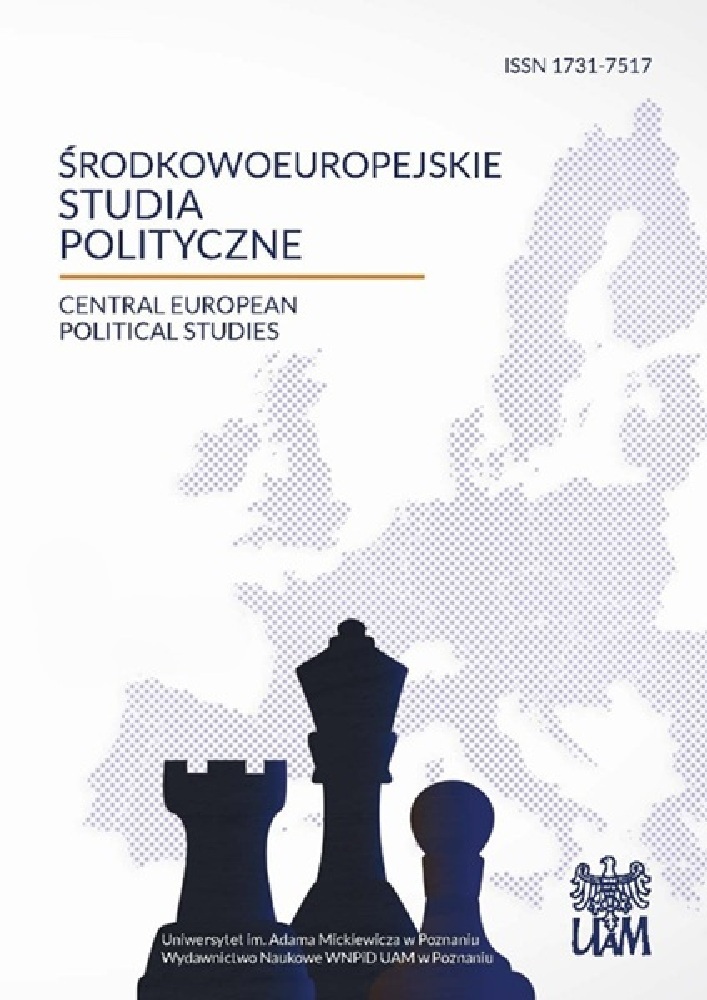Abstract
The central bank of a country is closely related to its economy, in particular to one aspect, namely monetary policy. The political transformation that began in Poland in the 1980s brought about changes to the political, social and economic system. The reality of a free market economy challenged the National Bank of Poland (NBP), creating conditions different to those of a centrally planned economy. The status, tasks and internal organization of the NBP, the central bank of Poland since 1945, evolved along the same lines as other elements of the state system. Modern legal solutions are based on the provisions of the Constitution of the Republic of Poland of April 2, 1997 and the Law on the National Bank of Poland of August 29, 1997. They give the central bank of Poland the status of one of the most independent central banks in the world. This is primarily illustrated by the constitutional ban on the bank’s direct financing of the budget deficit and ensuring the bank’s right to independently shaping and executing monetary policy. The ultimate result of the political transformation was the designation of the NBP’s functions in the Constitution of Poland: the exclusive right to issue money, formulate and implement monetary policy, and to bear responsibility for the value of the Polish currency. The Law on the National Bank of Poland from 1997 complemented the above provisions with an obligation to support the economic policy of the government, provided that this does not restrict the fundamental goals of the Bank. Given the current legal solutions, the NBP as the central bank performs three fundamental functions: that of an issuing bank, the bank of banks, and the central bank of the state. The internal structure of the Bank has also been altered: one-man management has been replaced with an actual tripartite division of power vested to three organs: the President, the Monetary Policy Council and the Board, which has resulted in a deconcentration of power. At present, the NBP enjoys a high position in the structure of the organs of the state. Including it in the Constitution has concluded the period of evolution, transformation and seeking the best place for the Polish central bank.References
Baka W. (1997), Transformacja bankowości polskiej w latach 1988–1995, Zarządzanie i Finanse, Warszawa.
Dekret o Narodowym Banku Polskim z 15 stycznia 1945 roku, Dz. U. 1945, Nr 4, poz. 14.
Dekret o reformie bankowej z 25 paŸdziernika 1948 roku, Dz. U. 1948, Nr 52, poz. 412.
Gronkiewicz-Waltz H. (1994), Bank centralny. Od gospodarki planowej do rynkowej, Olympus, Warszawa.
http://www.nbp.gov.pl/home.aspx?f=/o_nbp/informacje/funkcje_banku_centralnego.html, 15.06.2013.
Jezierski A., Leszczyńska C. (2001), Narodowy Bank Polski 1948–1970, Narodowy Bank Polski, Warszawa.
Jezierski A., Leszczyńska C. (1996), Pierwsze lata działalności Narodowego Banku Polskiego, Narodowy Bank Polski, Warszawa.
Jończyk A. (1998), Rada Polityki Pieniężnej – nowy organ banku centralnego, „Przegląd Podatkowy”, nr 8.
Kaszubski R.W. (1995a), Narodowy Bank Polski – centralny organ państwa, „Glosa”, nr 10.
Kaszubski R.W. (1995b), Narodowy Bank Polski 1945–1988 – aspekt prawny, „Bank i Kredyt”, nr 8.
Kłosiewicz P., Szpringer W. (1997), Zarządzanie Bankiem Centralnym w świetle nowej ustawy o Narodowym Banku Polskim, „Glosa”, nr 11.
Konstytucja Rzeczypospolitej Polskiej z dnia 2 kwietnia 1997 roku, Dz. U. 1997, Nr 78, poz. 483.
Kosikowski C. (1982), Dyskusyjne problemy reformy systemu bankowego PRL, „Przegląd Ustawodawstwa Gospodarczego”, nr 7.
Kosikowski C. (1997), Gospodarka i finanse publiczne w nowej Konstytucji, „Państwa i Prawo”, nr 11–12.
Kosikowski C. (2002), Pozycja Narodowego Banku Polskiego i jego organów w prawie polskim, „Państwo i Prawo”, nr 11.
Kosikowski C. (1999), Publiczne prawo bankowe, Polskie Wydawnictwo Ekonomiczne, Warszawa.
Niemierka S. (1998), Pozycja Prezesa NBPw „ustawach bankowych”, „Glosa”, nr 8.
Orzeczenie Trybunału Konstytucyjnego z dnia 13 września 1990 roku, U. 4/90, poz. 10.
Polański Z. (1995), Pieniądz i system finansowy w Polsce. Lata 1982–1993, Wydawnictwo Naukowe PWN, Warszawa.
Uchwała Rady Ministrów w sprawie nadania statutu Narodowemu Bankowi Polskiemu z dnia 27 czerwca 1975 roku, M.P. 1975, Nr 23, poz. 143.
Ustawa o Narodowym Banku Polskim z dnia 29 sierpnia 1997 roku, Dz. U. 1997, Nr 140, poz. 938.
Ustawa o Narodowym Banku Polskim z 31 stycznia 1989 roku, Dz. U. 1989, Nr 4, poz. 22.
Ustawa o Narodowym Banku Polskim z 2 grudnia 1958 roku, Dz. U. 1958, Nr 72, poz. 356.
Ustawa o statucie Narodowego Banku Polskiego z 26 lutego 1982 roku, Dz. U. 1982, Nr 7, poz. 57.
Ustawa o zmianie przepisów o reformie bankowej z 22 marca 1951 r. o zmianie przepisów o reformie bankowej, Dz. U. 1951, Nr 18, poz. 143.
Ustawa Prawo bankowe z dnia 29 sierpnia 1997 roku, Dz. U. 1997, Nr 140, poz. 939.
Ustawa Prawo bankowe z 31 stycznia 1989 roku, Dz. U. 1989, Nr 4, poz. 21.
Ustawa Prawo bankowe z 26 lutego 1982 roku, Dz. U. 1982, Nr 7, poz. 56.
Ustawa Prawo bankowe z dnia 12 czerwca 1975 roku, Dz. U. 1975, Nr 20, poz. 108.
Węcławski J. (1995), Problemy transformacji systemu bankowego, w: Przemiany gospodarki rynkowej, red. T. Tokarzewski, Wydawnictwo Uniwersytetu Marii Curie-Skłodowskiej, Lublin.
Wyczański P., Gołajewska M. (1996), Polski system bankowy 1990–1995, Fundacja im. Friedricha Eberta, Warszawa.
Wyrok Trybunału Konstytucyjnego z dnia 24 listopada 2003 r. sygn. akt K 26/03, Dz. U. 2003, Nr 209, poz. 2035.
Wyrok Trybunału Konstytucyjnego z 26 maja 1998 roku sygn. akt K. 17/98., Dz. U. 1998, Nr 67, poz. 446.
Zubik M. (2001), Narodowy Bank Polski (analiza konstytucyjno-ustrojowa), „Państwo i Prawo”, nr 6.
License
Copyright
© 2013, Uniwersytet im. Adama Mickiewicza w Poznaniu, Wydawnictwo Naukowe Instytutu Nauk Politycznych i Dziennikarstwa
OPEN ACCESS
